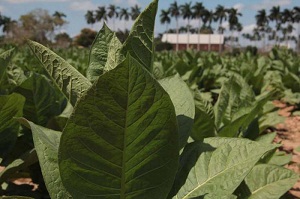 As a recurring theme, the U.S. blockade continues to severely affect Cuban industry, the economy and country; the record of an over 50-year, outdated, unilateral policy, which is no understatement.
As a recurring theme, the U.S. blockade continues to severely affect Cuban industry, the economy and country; the record of an over 50-year, outdated, unilateral policy, which is no understatement.
In the space of just one year, Cuba’s tobacco industry saw losses of 129,595,346 USD from April 1, 2015, through March 31, 2016; the result of the harsh measure imposed on the island by the Kennedy administration and maintained by successive U.S. governments.
It’s not just about what the blockade denies this important sector of the Cuban economy, but what it restricts it from doing and accessing. The total 129,595,346 USD in losses to the island’s tobacco industry is a result of Cuba’s lack of access to the U.S. market. Understand that we are talking about the largest tobacco market in the world (that of the U.S.), located only 90 miles from the home of the best tobacco on the planet (Cuba).
Speaking to Granma, Miguel Vladimir Rodríguez González – first vice president of the Tabaco de Cuba Enterprise Group (Tabacuba) – noted that the blockade affects exports of Premium hand rolled cigars, valued at 119,500,000 USD, as well as machine made, for a total of 4,650,000 dollars.
Other negative affects extend to “imports of supplies, packaging materials, accessories, replacement parts and other provisions vital to the cigarette and machine made cigar industry. Currently these operations are carried out from third countries, given the impossibility of obtaining such goods from the U.S. market at a lower price, at a cost of over 3,072,500 USD,” stated Rodríguez González.
Damages related to the island’s inability to obtain replacement parts and other supplies from the U.S. market to ensure continued production, is valued at 851,400 USD.
Meanwhile, “the increased cost of shipping; transferring goods, both in regards to imports and exports, a method used to protect ships from being fined; the decision not to dock at U.S. ports after departing from Cuba, in spite of increased shipping time which raises the cost of commercial operations, has meant an addition cost of 797,700 USD,” Rodríguez González noted.
Other negative financial affects have been seen in regards to fluctuating U.S. dollar exchange rates and pressure exerted by that government on foreign banks to discourage them from processing transactions linked to Cuba, all of which have resulted in increased costs of 723,746 USD.
(Granma)